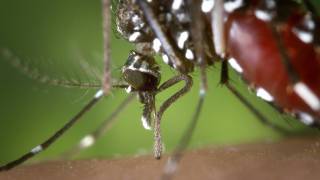How Does Zika Virus Impact Pregnant Women?

It is well known the Zika virus increases the risk of birth defects in pregnant women, but it was unclear how it causes microcephaly and other fetal brain defects.
Researchers have identified two Zika proteins potentially responsible for thousands of new born babies with abnormally small heads.
“The scientific community knows what the Zika virus does, but not who is responsible,” said researchers.
A new study found Zika targets specific white blood cells in a pregnant woman’s immune system, enabling the virus to spread, according to a new study by researchers at the University of Southern California’s (USC) Keck School of Medicine.
Much like HIV, these researchers found that Zika targets the white blood cells that typically consume viruses, bacteria, and debris to keep the body healthy.
“Pregnancy naturally suppresses a woman's immune system so her body doesn't reject the fetus — essentially it's a foreign object," said senior study author Jae Jung, professor and chair of Keck's department of molecular microbiology and immunology. Zika exploits that weakness to infect and replicate."
The Zika virus contains 10 proteins, but only NS4A and NS4B matter when it comes to microcephaly, according to this USC study.
Jae Jung, senior corresponding author and distinguished professor and chair of the Department of Molecular Microbiology and Immunology at the Keck School of Medicine of USC said, “We now know the molecular pathway, so we made the first big step toward target therapy for Zika-induced microcephaly.”
Jung said. “Years from now, one shot or a series of shots could target the proteins NS4A and NS4B or their collaborators.”
Researchers said they are the first to examine three strains of Zika in second trimester human fetal neural stem cells. Previous studies created tiny neural stem cell organoids from adult origin.
The miscreant (bad behaving) Zika proteins smack a cellular signaling gatekeeper called “Akt-mTOR pathway” until it is disoriented and can no longer properly guard brain development and autophagy regulation, the cell’s recycling factories.
Autophagy usually digests and kills pathogens; however, when a family of viruses called flaviviruses (dengue, hepatitis C and Zika) infects a cell, autophagy helps the virus proliferate.
“Zika loves and needs autophagy,” Jung said.
“Zika raises the activity in this recycling factory so they can use the energy and nutrients there to replicate. It’s possible that since Zika is using most of the energy, the neuronal stem cells are left with metabolic deficits. Thus the chances for them to differentiate and mature into neurons and other brain cell types is much lower.”
In short, Zika NS4A and NS4B proteins stunt brain development and prod autophagy to mushroom so that the virus could spread. When these two key proteins hijacked fetal neural stem cells, the size of brain organoids were, on average, halved, according to the study.
Working collaboratively, the two proteins stunted the growth of fetal neural stem cells further by 65 percent.
Moreover, differentiation of neural stem cells into mature brain cells, such as neurons and star-shaped supporting cells called astrocytes, was reduced by up to 51 percent.
Zhen Zhao, corresponding co-author and an assistant professor of research physiology and biophysics of USC said, “It is important to remember that not every pregnant woman infected with Zika virus gives birth to a baby with microcephaly.”
Zhao said. “Nevertheless, we are trying to develop a cure for that percentage that does get Zika-related microcephaly.”
The research was supported by the National Institutes of Health, Hastings Foundation, Fletcher Jones Foundation, Global Research Lab Program, National Research Foundation of Korea, Alzheimer’s Association and Cure for Alzheimer’s Fund. Lead author Qiming Liang is a special fellow of the Leukemia & Lymphoma Society and is supported by the Shanghai Institutions of Higher Learning.
These researchers did not disclose any conflicts of interest.
Our Trust Standards: Medical Advisory Committee









